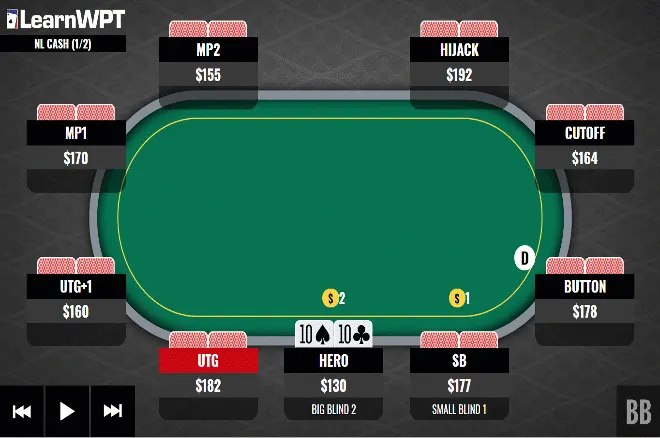Playing a Set of Tens Against a Tight Opponent

DECISION POINT: In a $1/$2 no-limit hold'em cash game, three players limp, then a tight player in middle position raises and both the hijack and cutoff call. It folds to you in the big blind with 10♠10♣ and you also call the raise, as do two of the limpers.
Six players see the flop come 10♥6♠4♣. It checks to the preflop raiser who continuation bets, and only you call. Now heads-up, the turn is the Q♦ and you check again, and your opponent bets once more. Action is on you...
PRO ANSWER: Against a default Villain in MP2, we should shove preflop. There is $39 in the pot already and we only have $130 behind. Also, we have multiple opponents with likely capped ranges and a hand that performs very well against most raising ranges from middle position players after several limpers.
However in this case since Villain is tight preflop and likely has a narrow range, calling preflop will be more profitable. The amount of money already in the pot makes it profitable for us to call $8 more even if we only ever continued when we flopped a set.
Once we see a flop, we should check-call since top set on a dry flop eliminates most ways in which an opponent can connect with the board.
The Q♦ on the turn gives our opponent more ways to connect (e.g., with A-Q or K-Q) and their very narrow hand range still includes overpairs. Check-raising all in is very reasonable, since this type of opponent will often check back on the river rather than go for three streets of value.
Against an opponent who has a wider range preflop and is more aggressive postflop, calling and checking the river to induce bluffs is a better play.
However, against this type of opponent with a narrow range, check-raising all in on the turn is the best play.
LearnWPT is a poker training site dedicated to transforming the poker games of rank beginners, skilled amateurs, and aspiring professionals. Offering both Live Workshops and Online Training, is a one-stop shop for poker education, designed to provide all the tools a player needs to become a winner. Visit LearnWPT.com today and get 2 Free Strategy Episodes that will immediately impact how you play. LearnWPT.com - Think Like a Pro!










